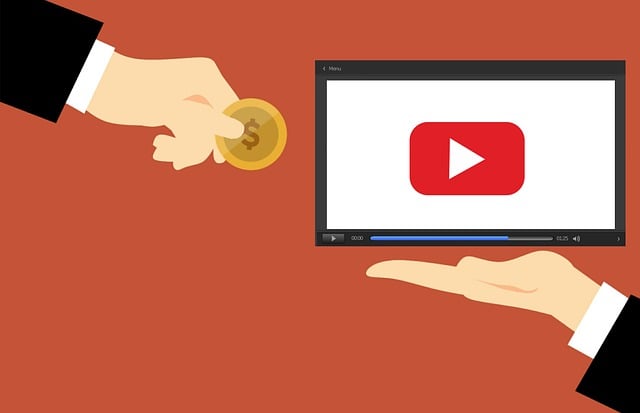TradingView Data Fees Explained
Author: Jameson Richman Expert
Published On: 2025-11-07
Prepared by Jameson Richman and our team of experts with over a decade of experience in cryptocurrency and digital asset analysis. Learn more about us.
TradingView data fees are the costs users may pay to access real-time market data for specific exchanges and instruments on the TradingView platform. This article explains what those fees are, why they exist, which markets commonly require payment, how to check and manage subscriptions, ways to reduce or avoid charges, and practical tips for traders (from beginners to professionals). You’ll also find real-world examples, recommended alternatives, and authoritative resources to help you make informed decisions about market-data spending.

What are TradingView data fees?
TradingView provides powerful charting, indicators, and social features that rely on market data feeds. Some of these feeds are freely available in delayed form, but exchanges that own their market data often require licensing fees for real-time access. TradingView data fees refer to the charges passed through to users who want live, tick-level pricing from exchanges that require compensation for redistribution of their data.
In short, you’re not paying TradingView for the data itself in many cases — you’re paying the exchange (via TradingView) for permission to receive and redistribute their live pricing. The fees, the classification of users, and the required subscriptions vary by market and by exchange.
Why exchanges charge for market data
Exchanges treat market data as a commercial product. Prices, order book depth, and trades are valuable to institutions and traders. Exchanges monetize this information to offset infrastructure costs, support liquidity programs, and create revenue streams. For a concise overview of market data and its role in markets, see the U.S. Securities and Exchange Commission’s explanation of market data and how it’s used.
There are two common ways exchanges distribute data:
- SIP (Securities Information Processor) or consolidated feeds — typically used for U.S. equities and provided through a central feed (often delayed or subject to licensing).
- Direct exchange feeds — low-latency, real-time feeds sold directly by exchanges (preferred by high-frequency traders and institutions).
How TradingView handles data fees
TradingView shows data from many exchanges and data vendors. For markets that charge for real-time access, TradingView offers optional market data subscriptions. If you don’t subscribe, you’ll usually see delayed quotes (often 10–15 minutes for equities) or aggregated free data for crypto and some other markets.
Key points about TradingView’s approach:
- Real-time data from certain exchanges is available only after you subscribe to that specific exchange’s data package.
- Some data is free in delayed mode; others (especially US equities, options, or certain futures) often require paid access.
- Exchanges may classify users as non-professional or professional, with higher fees for professional users. This classification depends on your business status and how you use the data.
- TradingView passes exchange charges through; it typically does not mark these up heavily but acts as a reseller/administrator for subscriptions.
For the most current details about which exchanges require subscriptions, and how to purchase them, check TradingView’s official help center and market data pages:

Which markets commonly require data fees?
Not all markets require fees. Below are typical examples:
- U.S. equities (NYSE, NASDAQ, AMEX): These exchanges and the consolidated tape often require licensing for real-time data. Non-professional users may pay lower fees than professional users.
- Options and some futures markets: Exchanges that operate options (e.g., CBOE) or futures (ICE, CME) may charge for real-time feeds.
- Some international exchanges: London Stock Exchange (LSE), Deutsche Börse, and others may require separate subscriptions for real-time data.
- Cryptocurrency exchanges: Most crypto exchange price data on TradingView is free in real time (because many crypto exchanges distribute market feeds publicly). Exceptions exist for proprietary data products or depth-of-book feeds.
Before subscribing, check TradingView’s market selection dialog or the exchange’s official site for exact packaging. For example, Nasdaq publishes market data product pages explaining feed types and fees. See Nasdaq’s market data overview for context:
How much do TradingView data fees cost?
There is no single fixed answer — fees depend on:
- The exchange (e.g., NYSE, NASDAQ, CME, LSE).
- Your classification (professional vs non-professional).
- The feed type (top-of-book, full order book, historical ticks).
- Whether you subscribe directly to the exchange or through TradingView.
Typical patterns you’ll encounter:
- Some exchanges charge a small monthly fee for non-professional real-time access (often single-digit to low double-digit USD per exchange per month).
- Professional users — firms, people using data for commercial purposes, or traders with certain accounts — usually face higher fees.
- Futures and depth-of-book feeds tend to be more expensive than basic top-of-book price feeds.
If you need exact pricing, the safest approach is to check TradingView’s in-app data purchase flow or the exchange’s data product page. Within TradingView, you can view the specific cost before subscribing. If you want a quick guide to visual trading signals, Bitcoin strategies and how market-data timing affects indicators, you might find these resources useful: Bitcoin Price Indicators, Signals & Strategies and BTC Live Price & Real-Time Strategies.
How to check and buy market data on TradingView
Step-by-step guide to view and manage data subscriptions on TradingView:
- Log into your TradingView account.
- Open a chart and click the market symbol box in the top-left (where you search instruments).
- Select an exchange or symbol. If real-time data requires a subscription, TradingView will usually show a lock icon or a prompt.
- Click the prompt to view the exchange’s data package, pricing, and classification options (non-professional vs professional).
- Confirm your classification honestly. TradingView may require documentation for professional status.
- Complete payment. The subscription will activate immediately for that account.
- Manage or cancel subscriptions via your TradingView account billing or market-data page.
Always review the terms and refund policy before purchasing. If you trade actively and use multiple exchanges, consider the cumulative cost vs the benefit of faster and more complete data.

Practical examples: Crypto vs Stocks
Example 1 — Crypto trader: If you trade Bitcoin spot or perpetual contracts via exchanges like Binance or Bybit, you’ll typically find real-time prices on TradingView that are free or included with your account because crypto exchanges often publish public streaming data. Many traders use TradingView for charting while executing on exchange platforms. For crypto-focused strategy and signal resources, see this Telegram trading signals guide: Crypto Trading Signals: Telegram Guide 2025.
Example 2 — U.S. equities trader: If you trade U.S. stocks on TradingView and want real-time NYSE/NASDAQ prices, you’ll likely be asked to subscribe to the relevant exchange data package. If you don’t subscribe, you will see delayed quotes (often delayed by ~15 minutes). For traders basing decisions on intraday speed (scalpers, high-frequency traders), investing in real-time feeds makes sense despite the added monthly costs.
How data latency and quality affect strategies
Not all traders need the lowest-latency, tick-by-tick data:
- Scalpers and high-frequency traders need ultra-low latency and often buy direct exchange feeds or colocate servers near exchange matching engines. They are typically professional users and subject to higher fees.
- Day traders benefit from real-time top-of-book feeds to spot breakouts and short-term moves.
- Swing traders and investors can usually use delayed data without materially affecting decision-making.
Choose the data quality that matches your timeframe and edge. Often, paying for multiple expensive feeds is unnecessary unless your trading style requires it.
Ways to minimize or avoid TradingView data fees
Here are practical ways to reduce costs while still getting usable market data:
- Use delayed data for analysis: Reserve real-time feeds for execution and use delayed charts for research and strategy development.
- Connect a broker that provides data: Some brokers provide real-time data to their clients as part of a trading account. If you connect that broker to TradingView, you may receive real-time prices through the broker integration without purchasing separate exchange packages. Popular brokers and exchanges that integrate with TradingView include some major crypto exchanges (Binance, Bybit) and brokers for other markets. Consider registering with an exchange that fits your trading style: Register on Binance, Register on MEXC, Register on Bitget, Register on Bybit.
- Aggregate free crypto data: For crypto-only traders, many exchanges publish free real-time feeds; you can use TradingView’s crypto symbols or third-party APIs (CoinGecko, CoinMarketCap) for reference prices.
- Limit the number of exchange subscriptions: Only buy the feeds you actually trade intraday.
- Classify as non-professional if eligible: Non-professional users often pay less. Be honest when declaring status; incorrect classification can lead to penalties or subscription revocation.
- Use exchange native platforms for execution: If you only need real-time prices for trading (not charting), using the exchange platform itself for execution can avoid paying TradingView’s exchange feed fees.

Alternatives for real-time or near-real-time data
If TradingView’s data fees are high for your needs, consider these alternatives:
- Broker integrations: Many brokers offer integrated charting with real-time data for account holders. This can include CFD brokers or crypto exchanges that provide TradingView chart access.
- Exchange APIs: Exchanges like Binance and Bybit offer WebSocket and REST APIs for real-time tick and order book data — useful if you build custom tools.
- Free market-data aggregators: CoinGecko and CoinMarketCap provide real-time-ish crypto prices via API for free or modest cost tiers.
- Other charting platforms: Some charting software may bundle exchange data differently or offer lower-cost feeds for specific markets.
- Public sources and government education pages: Use public resources (like those on the SEC site) to understand market data structure and decide what you truly need.
How data fees affect indicators and backtests
Backtesting and indicator signals depend on accurate historical data more than live ticks, but intraday timing matters for execution. Examples:
- Indicators using last-trade price (RSI, MACD) are less affected by micro-latency.
- Order-flow indicators and depth-based signals require live order book access and can be materially impacted by the quality of your feed.
- If you use TradingView’s alerts or webhook integrations for automated strategies, consider whether delayed data could create false alerts or missed opportunities.
To learn more about how live data impacts indicator performance and signal timing, see advanced strategy guides and price-forecast analysis:
Case study: A trader deciding whether to buy NYSE data
Scenario: Jane is a day trader using TradingView charts to trade U.S. stocks. She currently uses delayed feeds and places trades through her broker’s platform. Her problem is that she frequently misses early momentum moves and experiences slippage when reacting to delayed alerts.
Decision process:
- She evaluates how many trades per month depend on sub-minute price changes (i.e., whether her edge requires real-time data).
- She checks TradingView’s NYSE data pricing in the account market-data section, along with the broker’s real-time feed policy.
- She performs a cost-benefit analysis: number of profitable trades improved by real-time data × average profit per trade vs subscription cost × number of months.
- If the math works, she subscribes; if not, she considers alternative routes like using the broker’s real-time feed or limiting intraday trading to larger timeframes.
This approach — testing, measuring edge, and comparing costs — is the rational way to decide whether TradingView data fees are justified.

How to classify yourself: professional vs non-professional
Exchanges often require a classification because they subsidize market-data costs for retail investors. Professional users typically include people who:
- Provide investment advice or trade for a business.
- Use data for commercial purposes (e.g., powering a paid newsletter or trading signals service).
- Have higher account balances or trade in large volumes (some exchanges use specific criteria).
Misclassifying yourself is a compliance risk. TradingView and exchanges may request documentation if you claim non-professional status. Refer to the exchange or TradingView’s classification guidelines before selecting your status.
Tips for long-term cost control
- Audit your subscriptions quarterly. Remove feeds you don’t use.
- Use trial periods to determine whether real-time data adds measurable value.
- Bundle costs: if TradingView offers package discounts or if your broker provides feeds as part of account features, consolidate where possible.
- Consider paid signal services or curated feeds only if they provide a clear return on investment. For signal-based strategies, review independent performance records and understand latency sensitivities; resources like the Bitcoin signals and strategy guides can help you evaluate signal quality (see guide).
High-authority resources and documentation
For a deeper understanding of market data, regulation, and exchange-specific rules, consult these authoritative sources:
- U.S. Securities and Exchange Commission (SEC) — rules and guidance on market data and exchanges.
- Wikipedia: TradingView — platform overview and history.
- Nasdaq Market Data — exchange market data products and structure.
- TradingView Help & Market Data pages — check directly in your account for the latest fee schedules.

Frequently asked questions (FAQ)
Do I always need to buy data to use TradingView?
No. You can use TradingView with delayed data for research, backtesting, and many types of trading. Real-time fees are only required for certain exchanges and for users that need live-priced data.
Will TradingView tell me the cost before I buy?
Yes. When you attempt to access a locked feed, TradingView displays the cost and asks you to confirm the subscription before charging your account.
Are crypto price feeds on TradingView free?
Most crypto price feeds are available in real time on TradingView because many crypto exchanges publish their market data publicly. However, specialized depth-of-book products or proprietary exchange products might have fees. Always verify for each symbol.
What happens if I misclassify as non-professional?
Exchanges and TradingView can audit accounts and request documentation. Misclassification may lead to back-charges or suspended data access until corrected. Be honest when selecting your classification.
Can I use broker-provided data in TradingView?
Yes — some brokers provide real-time data access through their integration with TradingView. Linking your trading account can provide a way to receive data without separately subscribing to each exchange.
Final recommendations — how to decide
Decide based on three factors:
- Your trading timeframe and sensitivity to latency (scalpers vs swing traders).
- Which markets you trade (crypto tends to be cheaper for real-time data than U.S. equities).
- Your budget and the measurable impact on your P&L after subscribing.
Practical next steps:
- Audit your current TradingView usage. Identify the markets you need in real time.
- Compare TradingView’s data costs to what your broker might offer for free or included as an account feature.
- Test a subscription for a month to measure performance differences and decide accordingly.
For traders looking to improve strategy execution while managing costs, consider blending resources: use TradingView’s excellent charting with exchange execution tools and, where helpful, educational signals and strategy guides to refine timing and setup decisions. If you trade crypto and want additional signal or strategy context, review this week’s forecast and strategy resources on CryptoTradeSignals: Bitcoin Price Forecast and Best Crypto to Buy — Strategic Guide.
Useful links and next steps
- Open a crypto trading account (may help obtain real-time streams): Binance registration, MEXC registration, Bitget registration, Bybit registration.
- Learn more about signals and strategies: Crypto Trading Signals: Telegram Guide 2025 and Bitcoin Price Indicators & Strategies.
- Read official market data documentation: Nasdaq Market Data, and SEC Market Data FAQ.
Understanding TradingView data fees helps you match data quality to trading needs and control costs while still getting the tools you need to trade effectively. Audit your usage, test where possible, and choose the most cost-efficient path that preserves your edge. If you’d like, I can walk through your specific markets and trading style to recommend which feeds (if any) you should buy and whether broker-integrated feeds or exchange-native platforms might be a better fit.